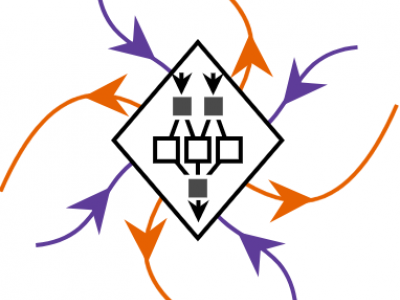*.csv (zip)
For the task of detecting casualties and persons in search and rescue scenarios in drone images and videos, our database called SARD was built. The actors in the footage have simulate exhausted and injured persons as well as "classic" types of movement of people in nature, such as running, walking, standing, sitting, or lying down. Since different types of terrain and backgrounds determine possible events and scenarios in captured images and videos, the shots include persons on macadam roads, in quarries, low and high grass, forest shade, and the like.
- Categories:
 10765 Views
10765 ViewsThe emerging 5G services offer numerous new opportunities for networked applications. In this study, we seek to answer two key questions: i) is the throughput of mmWave 5G predictable, and ii) can we build "good" machine learning models for 5G throughput prediction? To this end, we conduct a measurement study of commercial mmWave 5G services in a major U.S. city, focusing on the throughput as perceived by applications running on user equipment (UE).
- Categories:
 2171 Views
2171 ViewsWe conduct to our knowledge a first measurement study of commercial 5G performance on smartphones by closely examining 5G networks of three carriers (two mmWave carriers, one mid-band 5G carrier) in three U.S. cities. We conduct extensive field tests on 5G performance in diverse urban environments. We systematically analyze the handoff mechanisms in 5G and their impact on network performance, and explore the feasibility of using location and possibly other environmental information to predict the network performance.
- Categories:
 843 Views
843 Views
Online Machine Learning for Energy-Aware Multicore Real-Time Embedded Systems Dataset is a Dataset composed of Hardware Performance Counters extracted from a Multicore Real-Time Embedded System. This Dataset encompasses every Monitorable Performance counters in a Cortex-A53 quad-core processor, totaling 54 performance counters, which are sampled periodically through a non-Intrusive Monitoring Framework implemented over Embedded Parallel Operating System (EPOS), a Real-Time Operating System.
- Categories:
 401 Views
401 ViewsWe study the ability of neural networks to steer or control trajectories of dynamical systems on graphs, which we represent with neural ordinary differential equations (neural ODEs). To do so, we introduce a neural-ODE control (NODEC) framework and find that it can learn control signals that drive graph dynamical systems into desired target states. While we use loss functions that do not constrain the control energy, our results show that NODEC produces control signals that are highly correlated with optimal (or minimum energy) control signals.
- Categories:
 812 Views
812 ViewsHere we introduce so-far the largest subject-rated database of its kind, namely, "Effect of Paddy vegetation on path-loss between CC2650 SoC 32-bit Arm Cortex-M3 based sensor nodes operating at 2.4 GHz Radio Frequency (RF)". This database contains received signal strength measurements collected through campaigns in the IEEE 802.15.4 standard precision agricultural monitoring infrastructure developed for Paddy rice crop monitoring from period 03/07/2019 to 18/11/2019.
- Categories:
 536 Views
536 Views
This dataset is used to develop an algorithm for evaluating machining quality. When machining a workpiece in a milling process, vibration signals can be recorded by a 3-axis accelerometer, which is attached on the spindle of a CNC milling machine. To evaluate machining quality, the vibration signals can be segmented and extracted the corresponding features, in the time, frequency, and time-frequency domains. After serving with the features, a model can be developed to estimate the machining quality, such as the roughness of a workpiece.
- Categories:
 1463 Views
1463 Views
This dataset is used to develop an algorithm for automatic segmenting the collected signals. When machining a workpiece in a milling process, vibration signals can be recorded by a 3-axis accelerometer, which is attached on the spindle of a CNC milling machine. To segment the recorded signals, a moving window (0.5 sec) is applied to sample the vibration signals and manually labeled the corresponding modes, i.e. dry run or milling, of each window. To verify the algorithm, 3 types of operations are provided and recorded in csv format.
- Categories:
 628 Views
628 Views





